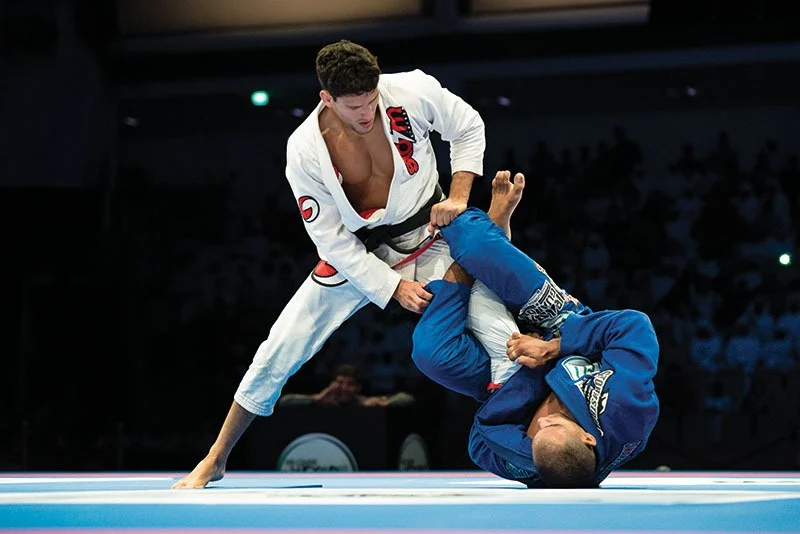Table of Contents
Cameron Allen
Chances are if you train Brazilian jiu-jitsu you are skipping the gym… Shame on you!!!! Well, actually, this was us for. really long time (whoops). We understand it though. It is challenging We time for both the gym and BJJ. Our biggest issue with mixing the two was not time per say but just the fact we didn’t want to work out to get “big” we wanted something that could help us get better at jiu-jitsu., so we created this blog post specifically for that: Welcome to the Grapplers Graveyard BJJ Workout Plan!
In this post, you will find a number of exercises that can help you stay more explosive on the mats and look your best when your are going for gold. Working in weight training has been a game-changerto make for us and helped us prevent injuries, look more shredded, and ultimately GET STRONGER!

Core: Abs, Obliques, Transverse Abdominis
Whether you train in grappling or not, it is great to have a strong core. In BJJ, having core stability is the key to effectively implementing your techniques and counter the ones used by your opponent against you.
You need core strength to pass guard and for basing/off-basing and setting up attacks. You need to be able to maintain your breathing during a contest and this is also where a strong core helps you.
The muscles of the core required to be trained to achieve the best BJJ performance are the rectus abdominis, the obliques, and the transverse abdominis.
Workout Goals for the BJJ Fighter – Should You Lift Weights for BJJ?
Yes, you should lift weights for BJJ, but not like how you would if you were a bodybuilder or a powerlifter. Weight training is recommended for athletes of most sports, BJJ included. The reason is that you need to build up your strength and endurance.
It is a fact that lifting weights can make you stronger which means that you’ll be able to implement your BJJ techniques better. The ideal BJJ strength routine should combine techniques with power training.
Many like to go all out in the gym and lift as much as they can. While this will make you stronger, it isn’t recommended as it can make you tired for your BJJ workout and even cause injuries and cramps.
Technique is the most important aspect of BJJ/grappling performance. But want to increase your chances of landing submissions, finishing takedowns, and maintaining position? This program will have you man handling your opponents making them ready to tap.
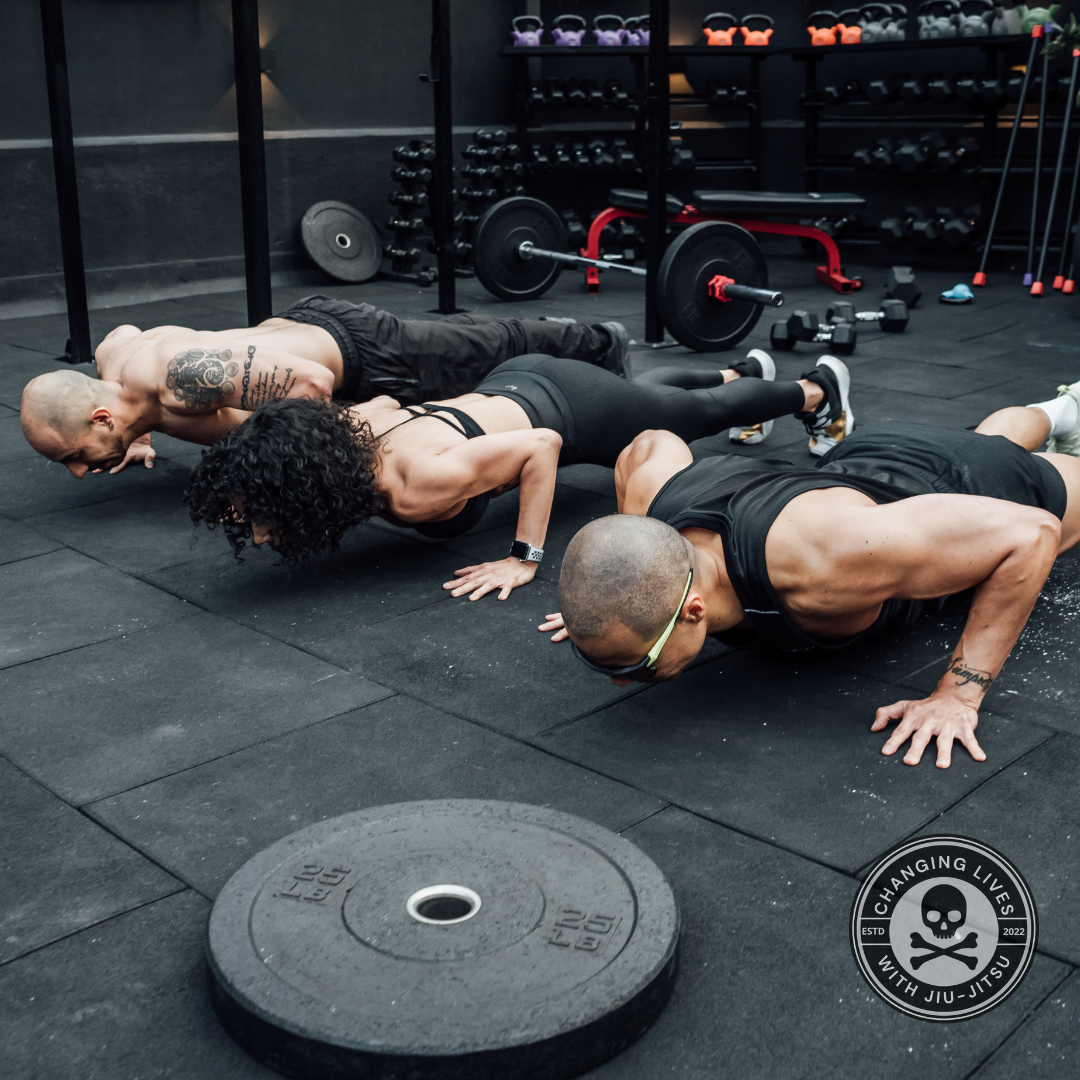
Upper Body Muscles Used in BJJ
There are a variety of upper body muscle groups that are utilized in jiu-jitsu. The major ones are the following:
Upper Torso
The upper torso is the major area that contains the arms (biceps and triceps) and shoulders, which are crucial for executing a variety of different techniques – takedowns, submissions, etc.
Forearms
The forearms and the muscles on the wrist are also important as they enhance your grip strength. A powerful grip leads to easier subduing of your opponent, which is needed prior to the execution of several moves.
Abdomen
There are two important muscles here that are important for elite BJJ athletes. The first is the rectus abdominis that extends from the pelvis to the chest and the second is the transverse abdominis that extends between the ribs and the pelvis, and wraps around from front to back.
The former is responsible for bending and it helps you with takedowns. Meanwhile the latter protects vital organs, supports the spine, and improves your core stability and balance. Both are essential parts of your core that need strengthening.
Technique is the most important aspect of BJJ/grappling performance. But want to increase your chances of landing submissions, finishing takedowns, and maintaining position? This program will have you man handling your opponents making them ready to tap.
Upper Body and Grip Strength for BJJ
Skills are a must-have in BJJ; after all, they’re supposed to be the attribute based on which you get promoted. However, strength is also important as it can be the deciding factor when two equally-skilled BJJ practitioners collide. The same can be said for a powerful grip.
All the elite BJJ athletes possess high grip strength and endurance as it is quite helpful in the sport. You can develop this as you train in the sport over time, but it is always recommended to go the extra mile and train separately for it.
A powerful grip allows you to implement techniques such as choke holds and joint locks in easier fashion. Improving your grip means that you also improve the muscular endurance in your hands and forearms, and gain flexibility. All of this reduces the chances of injury as well.

Grips in BJJ
There are several types of grips used in BJJ. One of them is the crimp grip which is the one where you use the tips of the fingers pressed to their base. Then you have the clamp grip in which the fingers press against the palm. Then you have the pinch grip.
In this grip, you press the fingers and thumb together. Another one is the crushing grip in which all the fingers are squeezed together on the palm and are turned into a fist. The support grip involves grabbing something like you’d grab a barbell.
Last is the monkey grip similar to the support grip, but with the thumb and other fingers on the same side.

BJJ Exercises for Warming up, Mobility, and Injury Prevention
Before you begin your BJJ workout, it is important that you warm up. This will get your blood flowing, relax your muscles, raise your body’s temperature, enhance your strength, and most importantly, reduce the risk of injuries.
If you’re not properly warmed up, your performance won’t be as good and you’ll risk hurting yourself. Therefore, you need to pick a set of exercises to do before your jiu-jitsu workouts. Exercises such as bridging, shrimping, push-ups, sprawling, and rolling are recommended. In some cases, it makes sense to work some yoga into your routine to stay flexible.
Workouts and Exercises for BJJ Whether You’re an Elite Competitor or a Hobbyist
Prizefighting competitors and hobbyists may both be BJJ practitioners, but they tend to live very different lives. The pros train every day while your average hobbyists get their BJJ workout up to three days per week. As a result, there’s a difference in the intensity of their workout sessions.
Regardless, both need to opt for BJJ strength training programs that build up their endurance and flexibility. They should go for compound bodybuilding exercises such as squats and deadlifts which work out the legs – the deadlift is the best posterior chain exercise as well.
Then you have the body weight exercises that are great for building upper body strength such as push-ups and pull-ups. For lower body strength, lunges are another great form of bodyweight training. Shrimping, bridges, and rolling are also great for both types of practitioners.
Best Strength Training Exercises for BJJ
Strength training for BJJ requires you to perform some exercises that build up your endurance. Most of the recommended movements for strength development are compound exercises that you would do when starting out at the gym.
Ideally, you should mix strength training with your training program for BJJ. The actual training comes first as getting stronger won’t mean that you’ll get better at jiu-jitsu – both skills and strength are needed.
That being said, you should incorporate the following exercises into your BJJ strength and conditioning program:
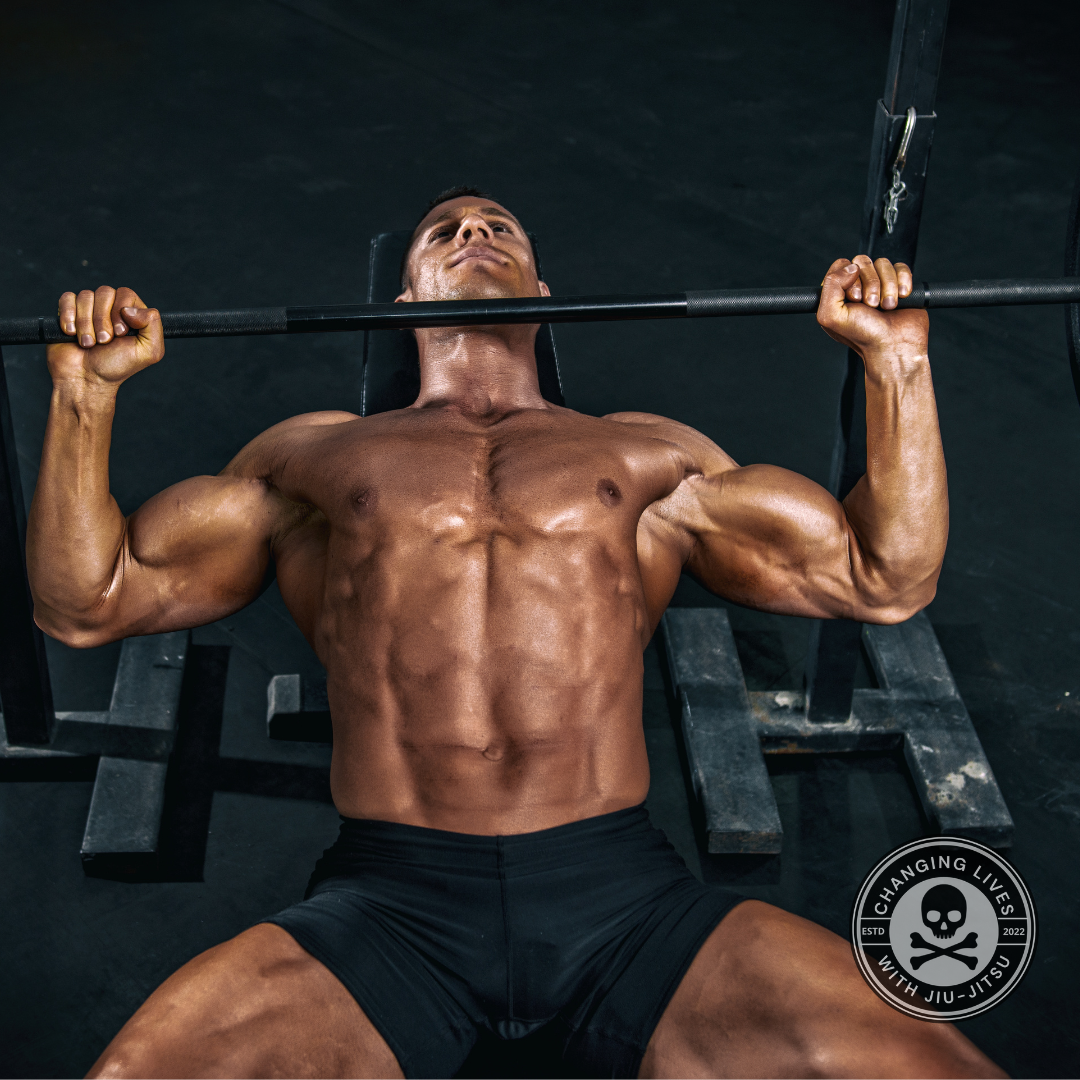
Bench Press
The bench press is one of the fundamentals of bodybuilding and building strength. It focuses on your chest, triceps, and even the back – all important areas in BJJ. You lie on the bench, grip the barbell with your hands at shoulder-width distance, and lift it up.
You bring it down until it touches your chest and then lift it back up. You can do this with dumbbells if there’s no one to spot you. Some recommend this as there’s a better freedom of movement and more instability to work through.
The bench press can also be done on a smith machine for maximum safety.
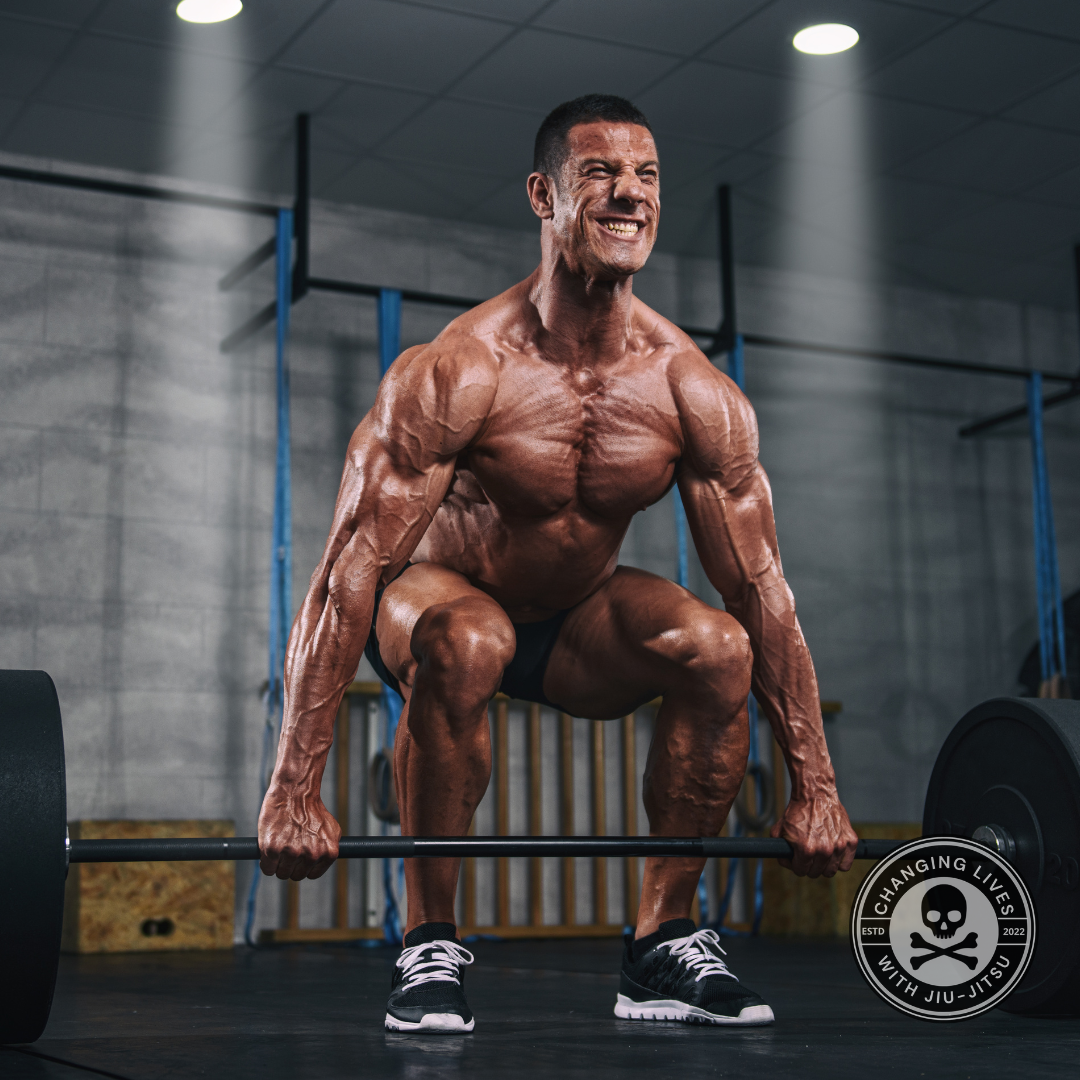
Dead Lift
Then you have the deadlift which is the best exercise as far as the number of muscle groups affected are concerned. It works out the entire posterior chain and helps build strength that can benefit you in other exercises.
To do this exercise, you should have the barbell in front of you and lift it. Ideally, you should have your back straight and lift with your legs till the bar reaches the knees, then you use the back for the remainder of the lift.
The distance between your feet depends on the stance you’re using – traditional or sumo. The deadlift can be done with a barbell, dumbbells, and even kettlebells.

Squat
Squats are essential for stronger legs and are a pillar of strength training for BJJ. Squats also work your glutes and back. To perform a squat, you hold the barbell on your shoulders or on your upper chest with your feet being hip-width apart.
You then squat by bending your knees, keeping your hips back, and then returning back up to the starting position. You can do this by keeping two dumbbells on your shoulders or holding a kettlebell in front of you as well.
Squats can also be done on the smith machine or the hack squat machine.
Rows
Rows are great for working your upper back and lats, plus your core and biceps. They also enhance your grip and you can do them with an overhand or underhand grip. You bend and keep your back flat, then pull the barbell (hands at shoulder-width apart) in a rowing motion.
They can be done with dumbbells or a kettlebell as well. If you’re not a fan of free weights, you can do these on the rowing machine – known as the seated rows. There are different attachments available in this case, with each having its very own impact.
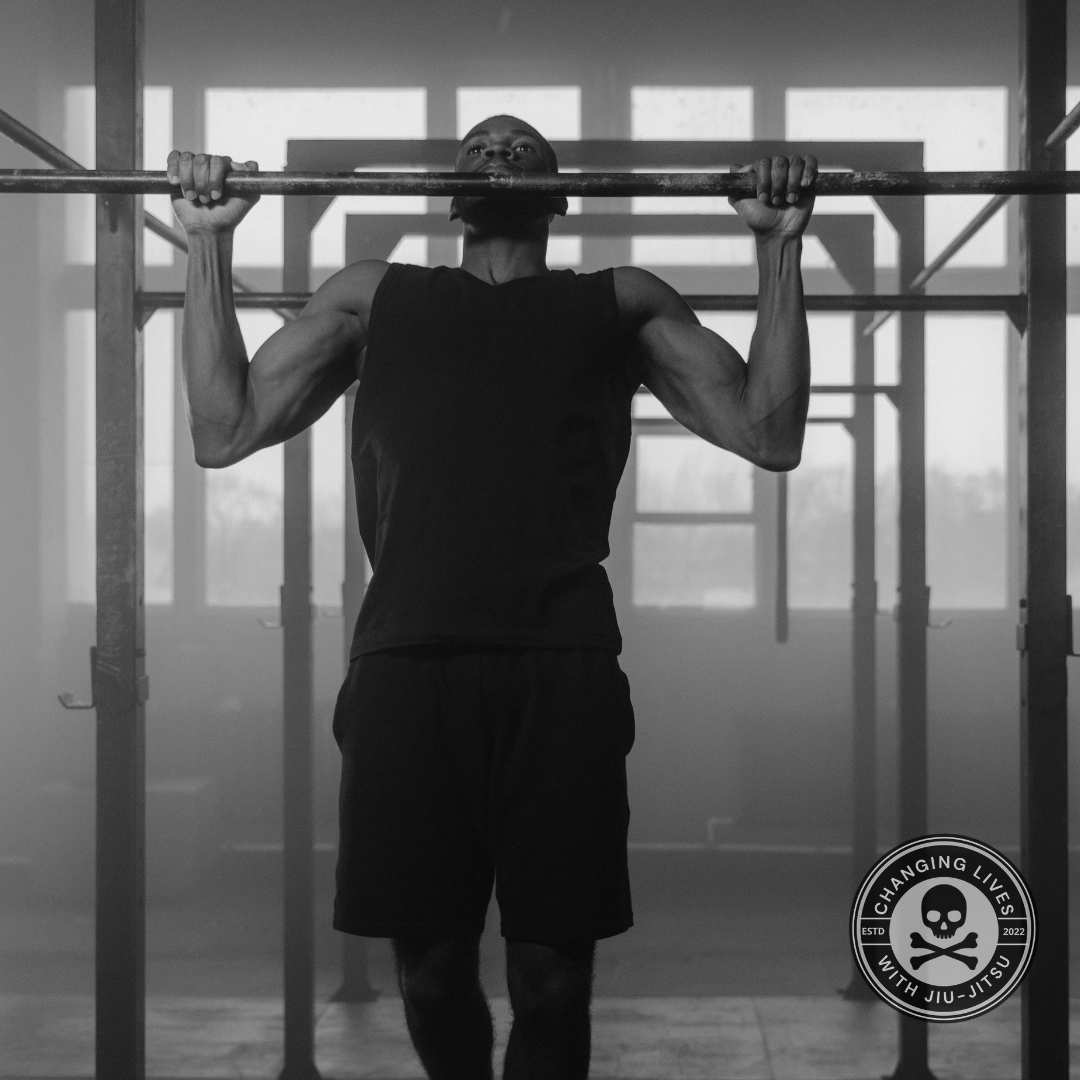
Pullups
There’s perhaps no better form of bodyweight strength training for BJJ than pull ups. These are some of the hardest exercises to do which makes them even better for you. Pull-ups work the upper back and your arms.
You basically hand onto a pull-up bar above you and pull yourself up with the help of your upper body. Switching the grip turns them into chin-ups which focus more on the biceps.
How strong is strong enough for BJJ?
This is a common question and is a very important one. People often tend to misjudge how strong they need to be as a BJJ practitioner, which is why they spend all their time in strength training instead of mastering BJJ techniques.
Note that you need to max out your grappling strength. However, it shouldn’t come at the cost of your BJJ skill set. Strength and conditioning training is important and needs to be seamlessly incorporated into your BJJ practice. There’s no magic number as to how strong you must be.
Lower Body Exercises for Strength and Power in BJJ
Most gym goers, which includes martial artists, like to skip leg day and they generally don’t care too much about working on their lower body. This means that they miss out on some crucial strength gains, including additional testosterone that helps their other muscles grow stronger.
For lower body strength, the barbell squat and deadlift are two great options. However, if you need to diversify your arsenal to shock the muscles from time to time, you can go for the following three versions of the squat:
Weighted Squat Jump
This is an explosive exercise that builds strength, working the legs, glutes, and calves. The squat jump is great for athleticism and helps build up your cardio, causing fat loss. To perform this, hold a pair of dumbbells by your side or a heavier single dumbbell with both hands in front.
Then you lower yourself into a squat, pause for a second and then rise up and jump. You should land softly by bending your knees and lowering yourself into the squatting position again. Do it without taking any breaks for the best results.
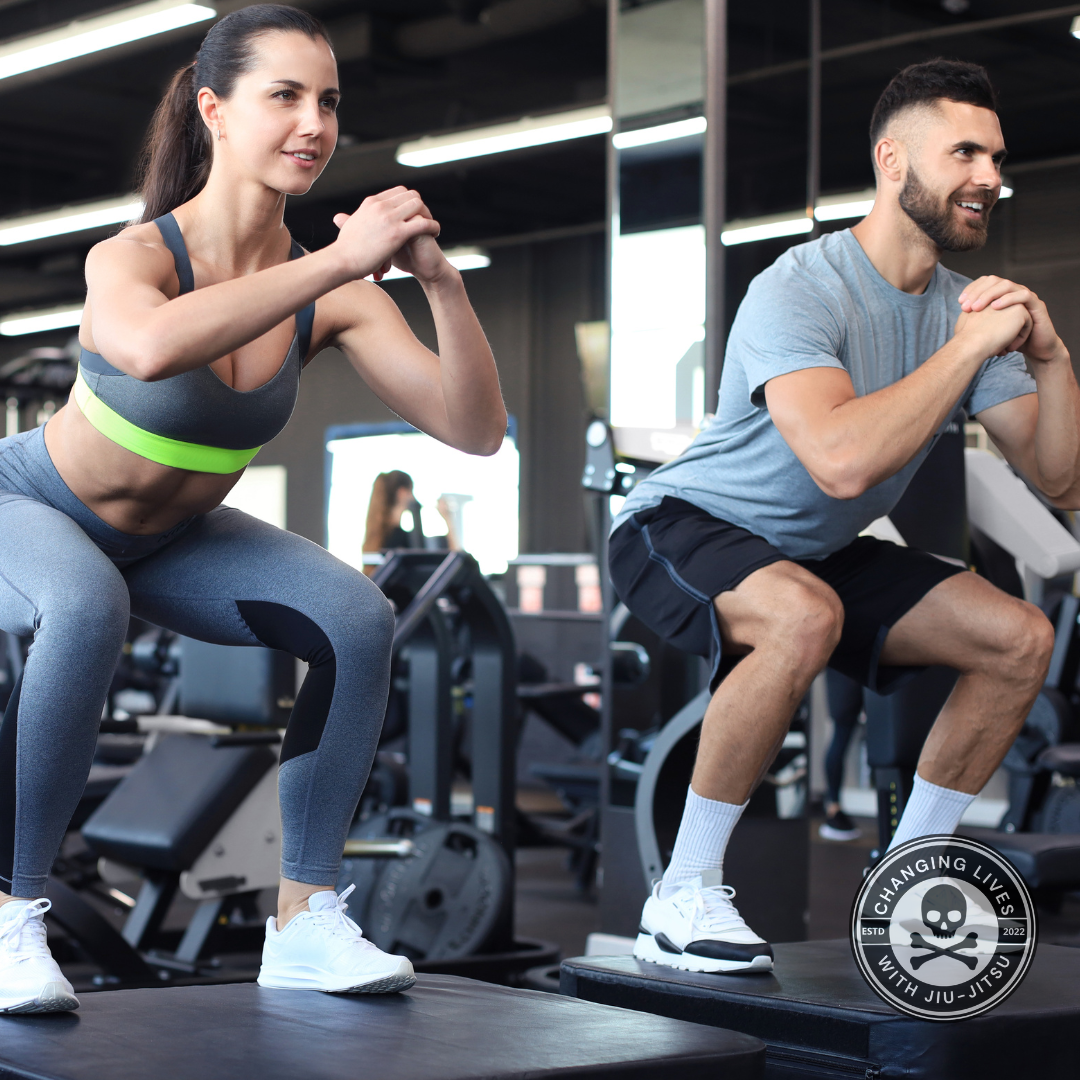
Cossack Squat
The cossack squat is a variation of the squat that strengthens your legs, glutes, abductors, core, and lower back – if you do it right. To perform this, keep your feet in a straight line with a wide distance between them.
Then squat down to one side, ensuring that the squatting leg is flexed at the ankle while the other one is straightened. The upper body should be upright. When you rise back up, ensure that you’re still in your wide stance. Repeat the movement on the other side.
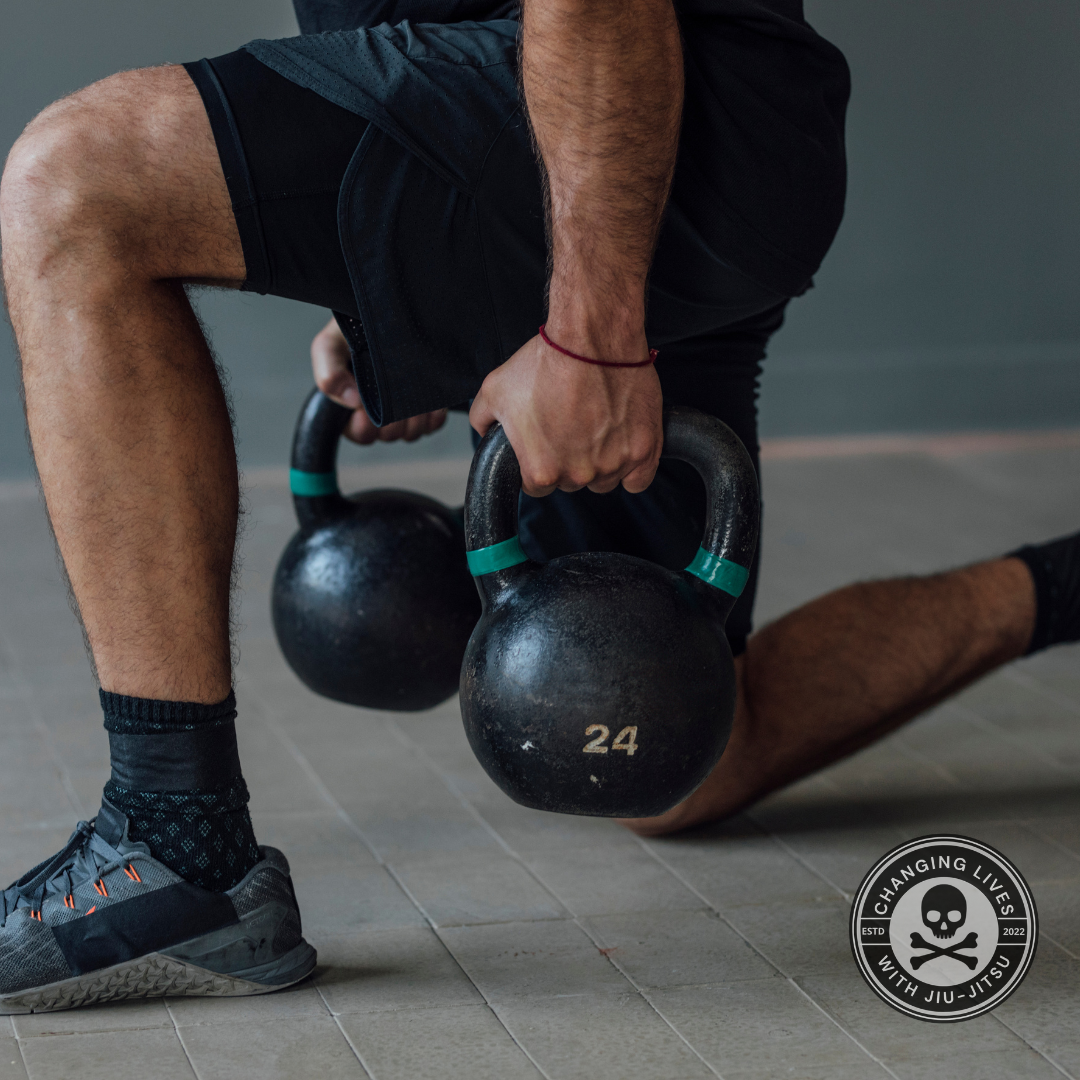
Split Squat
This is a great squatting movement in which you hold a pair of dumbbells or kettlebells by your side. Position one leg in front of the torso and the other behind it. Begin the squat but ensure that the knee of the leg behind the torso is stacked underneath it.
When you do this exercise for the first time, you’ll be thinking that it is similar to lunges. However, the major difference is that the feet move in lunges while they stay where they are in a split squat – making it a tad bit more difficult.
You can do this with a barbell as well but the dumbbell/kettlebell version is safer. The split squat can also be done with the other leg being placed on a bench behind you. The split squat works the legs, glutes, and calves.
Planning and Progressing Your Strength and Conditioning Program
There are several ways in which you can come up with a solid program for your strength and conditioning training. The best program is the one that works for you individually and doesn’t hinder your BJJ performance.
You could go for the conjugate method which utilizes compound movements to build strength – each of which targets several muscle groups in the upper and lower body. You can go heavy and reduce volume significantly as powerlifters do.
Or you can go for CrossFit which is also used for strength training. This method increased your athleticism quite a bit and it looks super cool as well. Because it is more explosive, it can also give you a leaner look overtime. The downside is that you’ll be too tired for actual BJJ training.
You could choose from other programs that rely solely on bodyweight training or kettlebells, those that are a hybrid of the aforementioned ones, and more. However, just remember that your time lifting weights shouldn’t exceed the time spent on your BJJ training.
The key is to include rest days so you’re not exhausted when training on the mat. You should train hard to build up your strength but not on a day where you may have a tough BJJ training session. You should utilize a heavy-light alternating regimen which gives you room for recovery.
Technique is the most important aspect of BJJ/grappling performance. But want to increase your chances of landing submissions, finishing takedowns, and maintaining position? This program will have you man handling your opponents making them ready to tap.
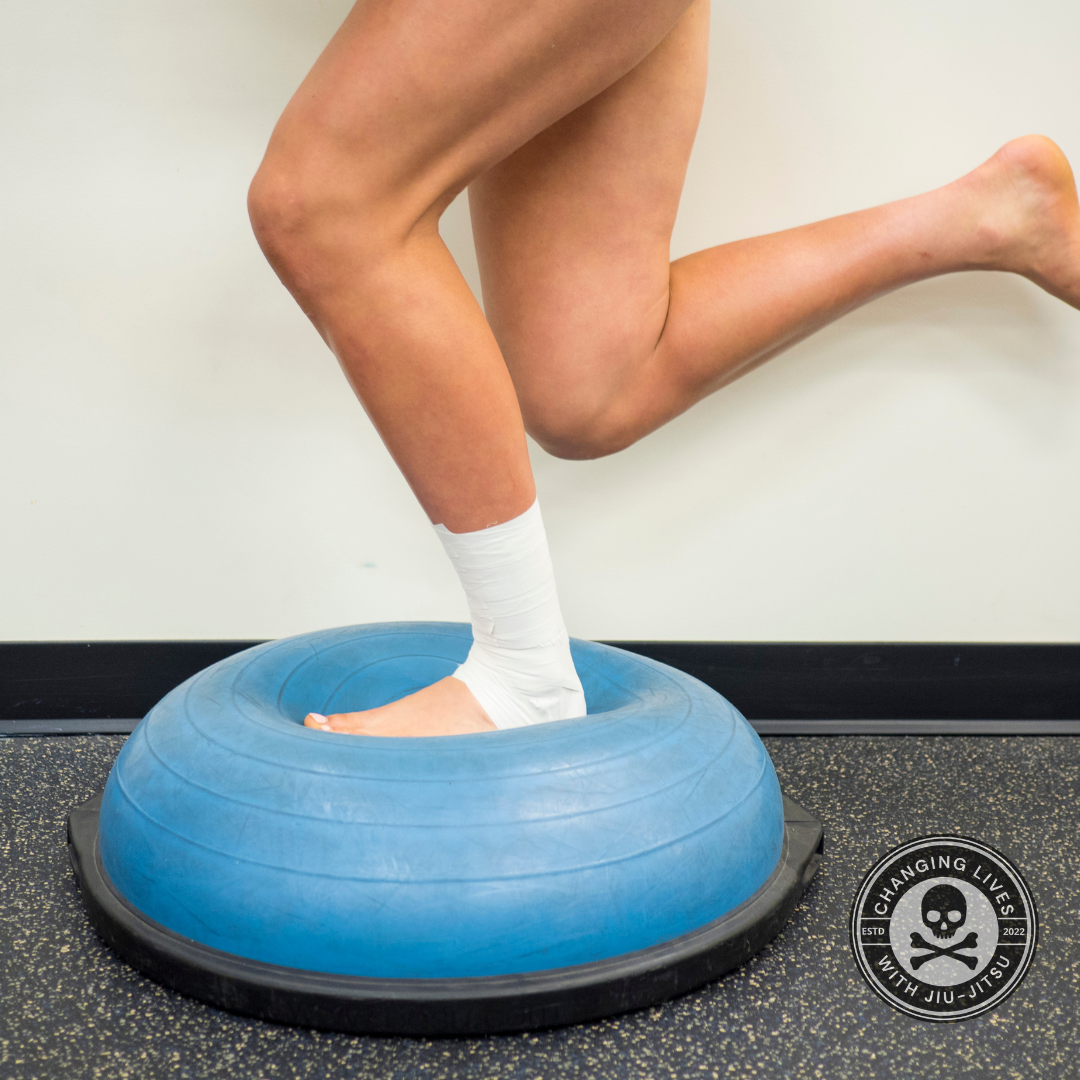
Stability Training for BJJ
Stability in BJJ means that you maintain your strength no matter the position you are in. You should be stable while moving as well as there is no point in being stable when you’re static due to the variety of complex positions in the sport. You need to have strength everywhere.
This means that you need to be strong enough to pass your rival’s guard, be able to execute moves regardless of the pressure, and control the opponent while laying on your back. Without stability, you’re more likely to get injured as your muscles won’t be able to handle a strong force.
In order to enhance your stability, you have to become as strong as you can possibly be. Work on your muscles so that they do their job well instead of other muscles having to be overused in order to help them out. Do your regular heavy lifts plus corrective exercises to fix any issues.
Benefits of Olympic Lifts and Kettlebells for BJJ
Olympic lifts are excellent for BJJ if you are struggling with strength issues. These lifts are always recommended since they build up your strength and add mass, while requiring a lot of skill and focus. Coaches recommend these for building up a strong foundation for their students.
Then you have the kettlebells which are also great – some would call them even better for their versatility. They offer a larger variety of explosive movements that also build up your strength. They may be challenging, but they’re worth mastering for the strength and stability they bring.
Either way, both these methods of training should result in explosive power and strength in your lower body and back. They’ll enhance your athleticism as well as your cardiovascular fitness for good measure.
Some Olympic Lifts That Help
There are many types of movements that can make you strong enough to handle anything in BJJ. But the recommended olympic lifts are power cleans, squats, and deadlifts. You’re also advised to try out the hang snatch and clean movements.
Kettle Bell Exercises for Explosiveness
There’s a lot you can do with kettlebells for BJJ. Swings, Turkish get-ups, and goblet squats should definitely be atop your list. You should also try to incorporate farmer walks and the overhead and offset carry movements.
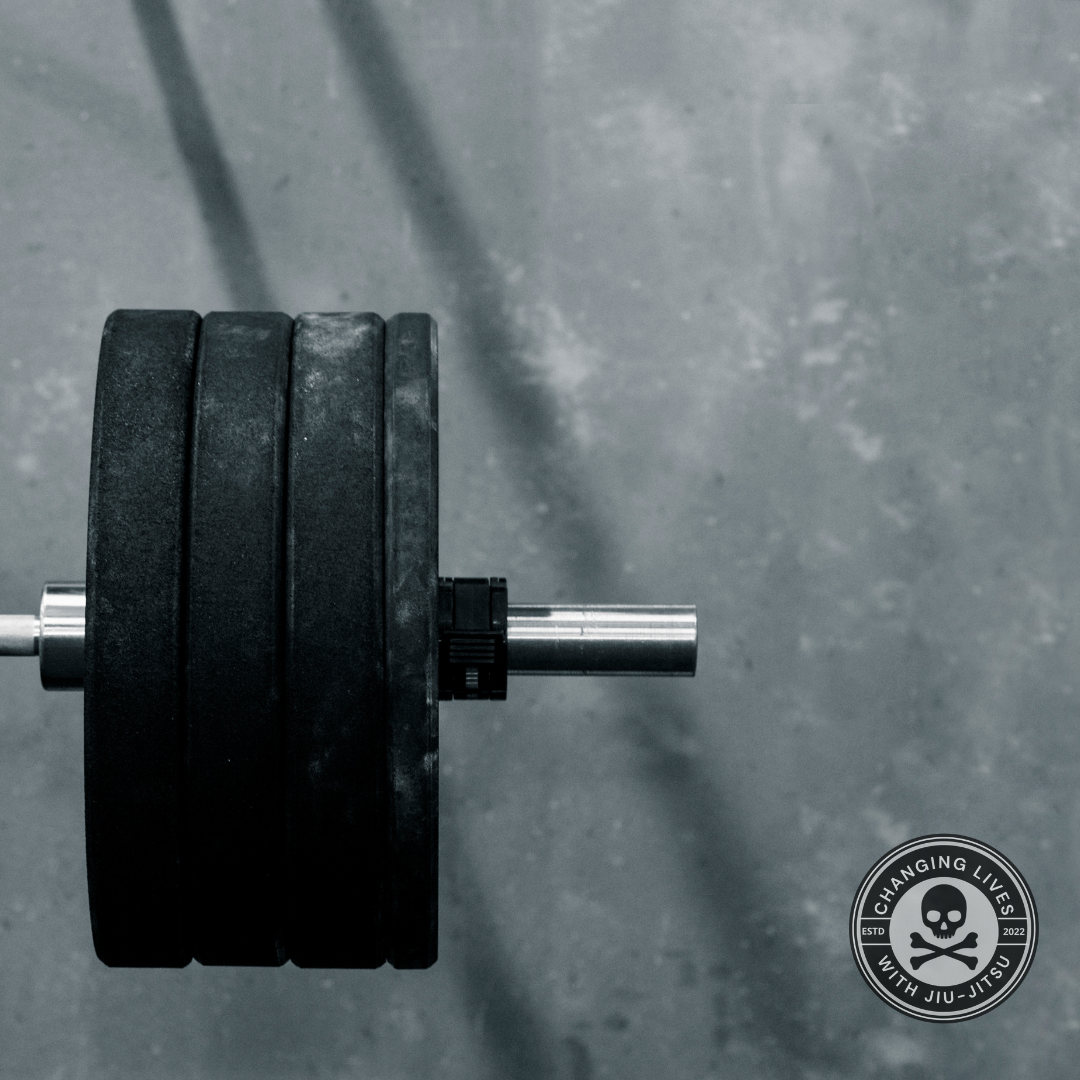
Barbell Training for BJJ
Despite the countless methods of training and equipment available today, there’s nothing quite like training with a barbell. You can use barbells to build up your strength and conditioning for the mat. Barbells allow you to load them up and work out in a stable and manageable manner.
Barbell workouts primarily focus on the major compound exercises that can build up a nice foundation of strength. The multi-joint exercises can work several muscle groups at a time, saving you a lot of time and effort for your BJJ training.
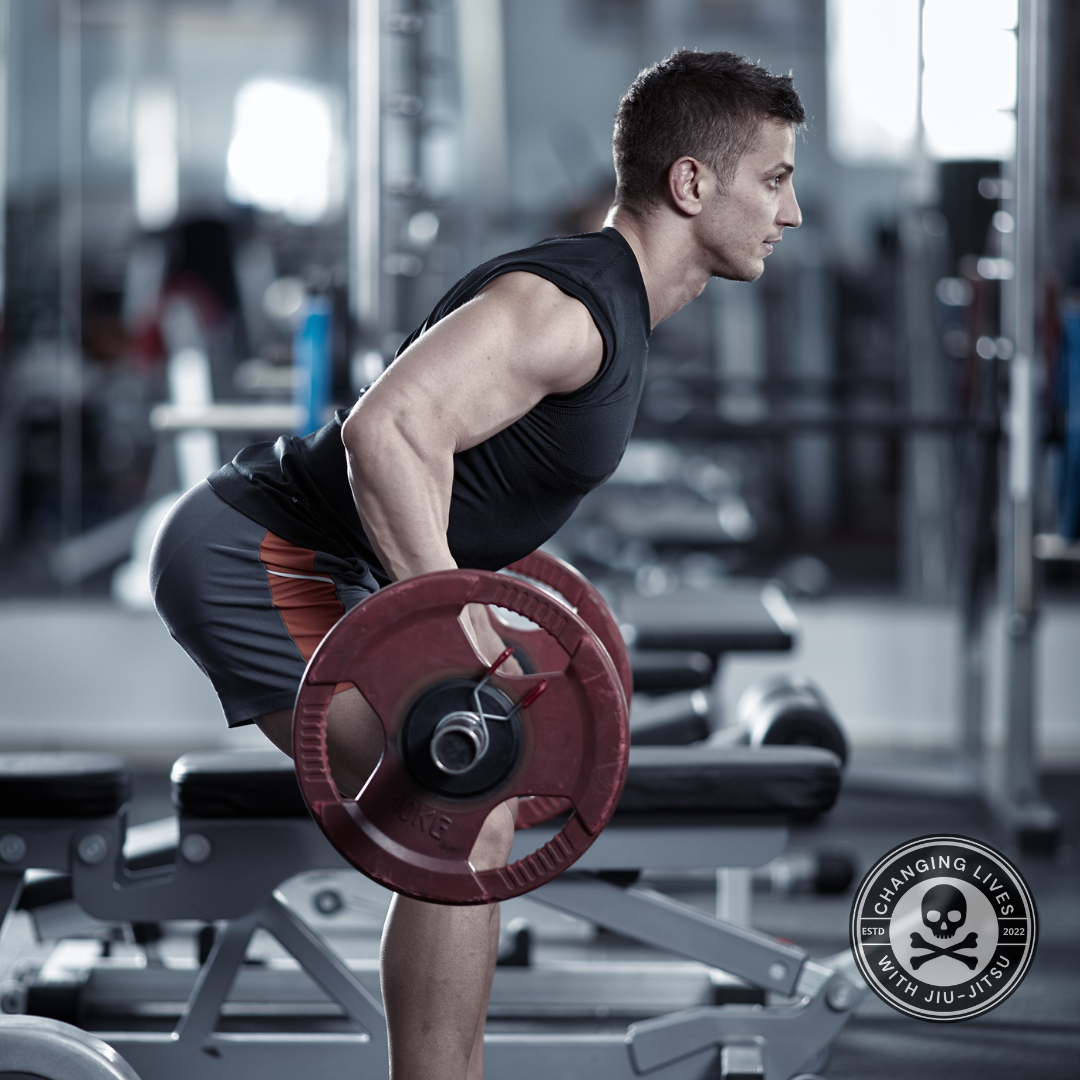
Barbell Row
Old school bodybuilders popularized this horizontal pulling movement and used it to build up their lats and back. The barbell row is also an excellent tool for enhancing your grip and increasing the stability of your core.
You simply hold the barbell with your hands at shoulder’s width, bend downwards and then pull it in a rowing motion with an underhand grip. Should you switch to an overhand grip, you can involve the rear delts as well.
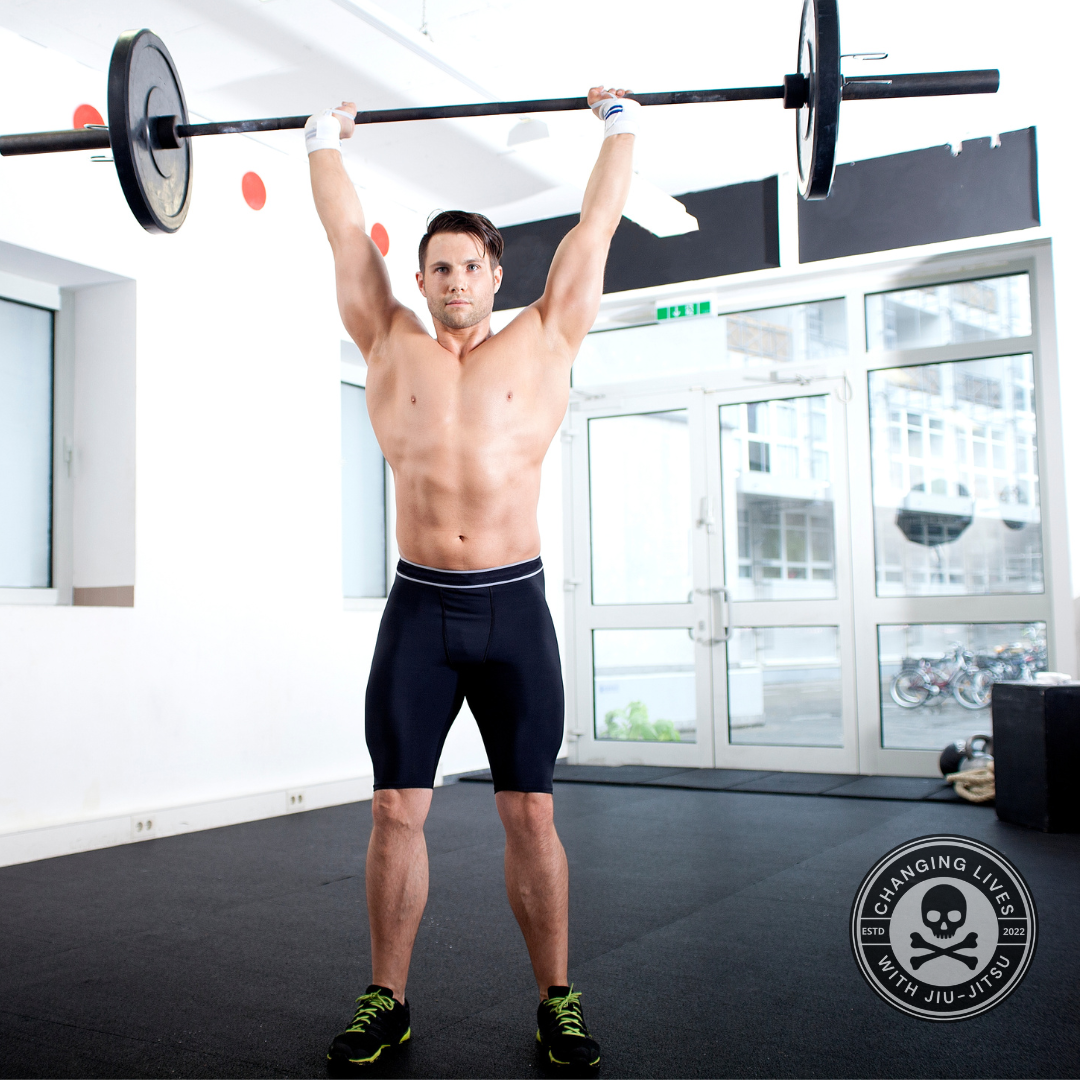
Barbell Overhead Press
This press is universally accepted as one of the best fundamental exercises for building shoulder strength. It works your delts, upper traps, upper chest and even your triceps. It also builds up your body’s stability to deal with the weight.
To perform the overhead press, hold the barbell with your hands at shoulder’s width apart and keep your forearms vertical. Then you lift it completely with your arms locking out. Many do this with the barbell behind their neck but it can cause shoulder issues in the long term.
Strength Training Doesn’t Have to Be Super Sport-Specific
You’ve probably noticed that many of the exercises mentioned on this piece are also used by powerlifters to build up their strength and endurance. This is because strength training methods are the same for every athlete.
However, unless you’re a bodybuilder or strongman, training in your sport should be your number one priority. Building up your strength comes second but you have to do it religiously as well. Only then can you become an elite competitor or start to win.
Benefits of BJJ Strength and Conditioning
The advantages of BJJ strength and conditioning exercises cannot be understated. You use these to build up your strength so that you can stretch out your opponent on the mat and escape from anything they use on you.
You become more flexible and mobile, allowing you to grab wins from unusual positions. They also build up your muscular endurance so that they don’t get fatigued and that you don’t get injured as much.
Bodyweight Exercises for BJJ Performance
There’s just something special about being able to control and manage your bodyweight. Bodyweight exercises help you do this and they’re really beneficial in enhancing your BJJ abilities. You become stronger, and don’t need a gym or any fancy equipment for it.
However, bodyweight training isn’t possible for everyone, especially beginners. This is why many start strength training with free weights and then begin building up their prowess in this regard. The best exercises include push-ups, dips, lunges, chin-ups, and inverted rows.
Finding the best kettlebells for home workouts has never been easier. Make this year the year you increase muscle mass and your strength!
FAQs
How many times a week should I strength train for BJJ?
You are recommended to train up to two-three times a week in order to build up your strength, endurance, and conditioning for BJJ. This applies to elite competitors – hobbyists can even train once a week.
What are the best ways to warm up for a BJJ workout?
You need to pick a set of exercises that get the blood flowing into your muscles without tiring you out. Movements such as push-ups, bridging, shrimping, sprawling, and different forms of rolling are great ways to do so.
Will BJJ make me ripped?
BJJ does give you a good workout but if you want a lean physique, you’re going to have to eat properly and lift weights as well. If you opt for more explosive movements outside of your BJJ training, you can definitely become ripped.
Does BJJ count as strength training?
BJJ does build up your strength but it doesn’t work everything like it should. This is why you train separately for strength and conditioning to fill in the gaps and train the weaker muscles.
How can I increase my stamina for Jiu-Jitsu?
There are several ways to do this, with cardio workouts and more rolling being the simplest way. Adding more explosive movements – that get your heart rate up – to your strength training is definitely recommended.
How can I improve my jiu-jitsu at home?
You need to study the techniques properly and try to work on one of them at a time. There are exercises such as bridging and rolling over that should help you.
Can you get in shape with Brazilian Jiu-Jitsu?
Yes, training in BJJ can be considered a great strengthening and cardio workout that can help you lose many pounds and if you eat right, it can gain you muscle as well.
How many times a week should you train Brazilian Jiu-Jitsu?
If you’re a hobbyist, then it should be around two to three times per week. If you’re a competitor, then you should try to train every day or as much as possible. Most high-level competitors are training twice a day.
FUEL YOUR BODY. FOCUS YOUR MIND.
You show up every day, even when it's hard – because you know there's no shortcut. You're on The Path - a personal journey to get smarter, stronger, smarter, healthier – better. Nobody said it would be easy. One thing is certain: you need the right fuel.
Newsletter
Signup for news and special offers!
Thank you!
You have successfully joined our subscriber list.


